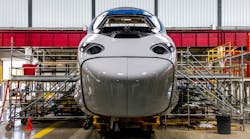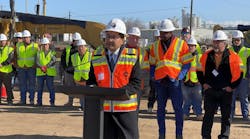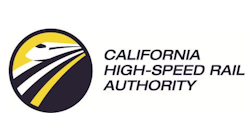MTI report outlines economic and environmental benefits of high-speed rail in U.S.
The latest Mineta Transportation Institute (MTI) report outlines the benefits high-speed rail could have on the U.S. economy and the environment. The report, The Economic and Environmental Potential of High-Speed Rail, outlines the potential benefits, which include job growth and increased economic activity, creation of an entirely new domestic manufacturing base, station area development and improved regional connectivity and reduced greenhouse gas (GHG) emissions and better land use.
High-speed rail is a passenger rail system that operates at speeds greater than 150 miles per hour (mph). Many countries and regions—including Germany, Spain and the United Kingdom in Europe, China, Japan and South Korea in Asia—have had high-speed rail systems in place for decades.
The MTI report outlines the potential benefits of high-speed rail, including:
- Job creation and economic output: The California High-Speed Rail Authority (CHSRA) estimates high-speed rail has generated an estimated 74,000 to 80,000 jobs per year, $5.6 billion to $6 billion in labor income and $15 billion to $16 billion in economic output between 2006 and 2022.
- Domestic manufacturing: As of 2015, it was estimated the rail manufacturing industry supports 90,000 jobs and that more than 750 companies in at least 39 states manufactured components for passenger rail and transit.
- Station area development, regional connectivity and smart growth: Multiple studies show high-speed rail in the U.S. could connect megaregions, forming the corridors of housing, employment and recreation in more densely populated areas of the country.
- GHG emissions reduction: One study estimates high-speed rail in the U.S. can save up to 800 million tons of CO2 emissions over a 40-year period or approximately 2 trillion miles traveled in a typical 22 MPG gas-based car.
- Cost savings associated with foregone infrastructure improvements: One study found it would cost an estimated $122-199 billion to provide the equivalent highway and airport capacity that the San Francisco to Los Angeles high-speed rail network would provide.
In the U.S., Amtrak’s Acela is the only system presently capable of operating at such speeds but several high-speed rail systems are in progress or in the planning stages, including:
- Brightline West (Las Vegas to southern California)
- CHSRA (Los Angeles to San Francisco)
- Texas Central (Dallas to Houston)
- Cascadia Project (Portland, Ore., to Vancouver, B.C.)




